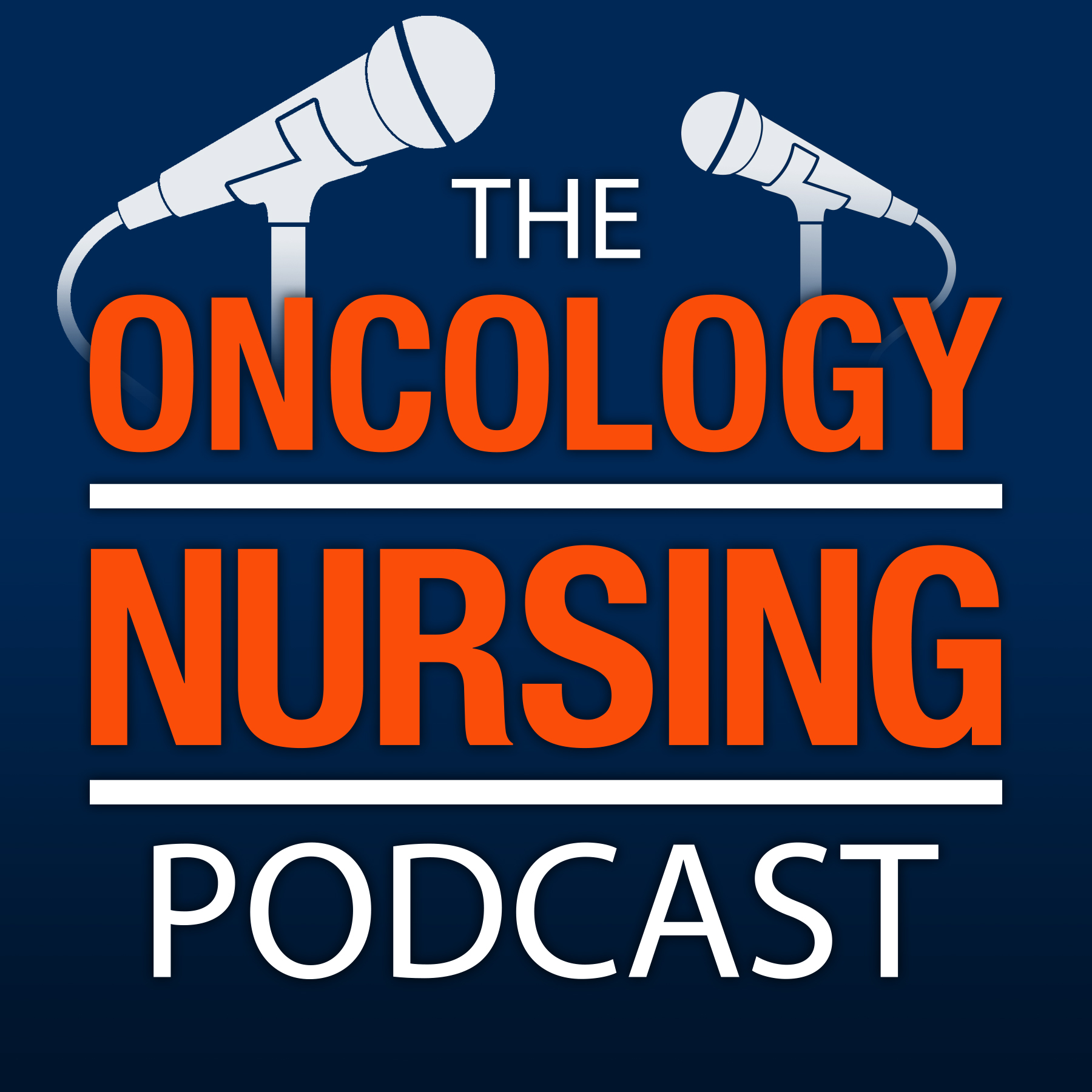
Episode 237: Oncologic Emergencies 101: Prepare Your Practice With Clear Policies and Procedures

The Oncology Nursing Podcast
Shownotes Transcript
“These policies, procedures, order sets, and algorithms for oncologic emergencies are so important. They give you knowledge in your back pocket: This is the way we’re going to treat this, this is the way to quickly respond to this, and this is the way to treat this in the safest way possible,” ONS member Cassie Durand, MS, RN, CNS, AGCNS-BC, OCN®, clinical nurse specialist at Memorial Sloan-Kettering Cancer Center’s Long Island, NY, regional site, told Jaime Weimer, MSN, RN, AGCNS-BC, AOCNS®, oncology clinical specialist at ONS. Durand discussed how to develop and apply procedures to care for patients with oncologic emergencies. This episode is part of a series of oncologic emergencies; the others are linked in the episode notes. You can also earn free NCPD contact hours after listening to this episode and completing the evaluation linked below.
Music Credit: “Fireflies and Stardust)” by Kevin MacLeod
Licensed under Creative Commons by Attribution 3.0
Earn .5 contact hours of nursing continuing professional development (NCPD) by listening to the full recording and completing an evaluation at myoutcomes.ons.org by December 9, 2024. The planners and faculty for this episode have no relevant financial relationships with ineligible companies to disclose. ONS is accredited as a provider of NCPD by the American Nurses Credentialing Center’s Commission on Accreditation.
Learning outcome: At the conclusion of this podcast, the learner will report an increase in knowledge related to an institutional approach to preparing for oncologic emergencies.
Episode Notes
Complete this evaluation for free NCPD).
Previous Oncology Nursing Podcast episodes on oncologic emergencies)
ONS book: Understanding and Managing Oncologic Emergencies: A Resource for Nurses (third edition))
ONS courses:
Oncologic Emergencies)
Treatment and Symptom Management—Oncology RN)
Essentials in Oncologic Emergencies for the Advanced Practice Provider)
ONS Huddle Cards™)
ONS Oncologic Emergencies Learning Library)
To discuss the information in this episode with other oncology nurses, visit the ONS Communities).
To provide feedback or otherwise reach ONS about the podcast, email [email protected]).
Highlights From Today’s Episode
“Nurses who are caring for these patients getting certain infusions have such a greater sense of autonomy. They can react in a moment’s notice. You need to have an algorithm and order set in order to treat the patients so, so, so quickly.” Timestamp (TS) 07:28
“We know that following metrics is so important for checking adherence to our standards and, most importantly, for improving patient outcomes.” TS 08:23
“We all combine thoughts to figure out what the most relevant simulation would be for nurses in specific areas. The scenarios are very real-life mannequins—they’re life-sized, they breathe, they talk, they have IV access, and they portray what we want them to. We load up the mannequin software before nurses come here. In our infusion unit, we’ll have the mannequin portray a hypersensitivity reaction, and then, all of a sudden, they’ll be in respiratory distress, and they may or may not code, just to keep the nurses on their toes. Because of all the preparation that goes into it on our end before the simulation is so relevant to their area, the nurses really like it because it’s not random. We also hold a structured informal debrief, just like what we do in real life, after the simulation so we can ask questions, what went well, what didn’t, and what we can change in the future. Simulation has become a huge aspect of our nursing education here.” TS 13:51
“We have a lot of new staff members on the floor, just like I’m sure that every institution has. So I think they really appreciate a debrief, because they can really learn so much from it. We call it a ‘hot debrief,’ which means we’re debriefing right after the event so that way we can get almost every member from our interprofessional group to stay and very quickly and succinctly talk about the event. That way, we’re not chasing people down the next day or next shift to debrief. And we’ve seen some pretty good results.” TS 17:33
“We have a clinical nurse specialist (CNS) who is available 24 hours a day at our main campus site where all of our inpatient beds are. Nights, weekends—there’s always one there. And they support the nurses and respond to emergencies. Our CNSs have such a great rapport with our staff members, and I find that the nursing staff always feel so comfortable now asking them questions, calling for help, wanting to show them something, or asking them to look up a policy for them. . . . As the CNS at the bedside, I think that sometimes when the nurses see us there, even just our presence there, it keeps them at ease during a critical situation because they know that we can jump in and help when needed. Our nurses do such a great job in emergencies, but I do think that having people in the CNS role there really just makes them feel so much more comfortable.” TS 23:13